How to Store Self Inflating Sleeping Pad: An Experts Guide in 3 Easy Steps
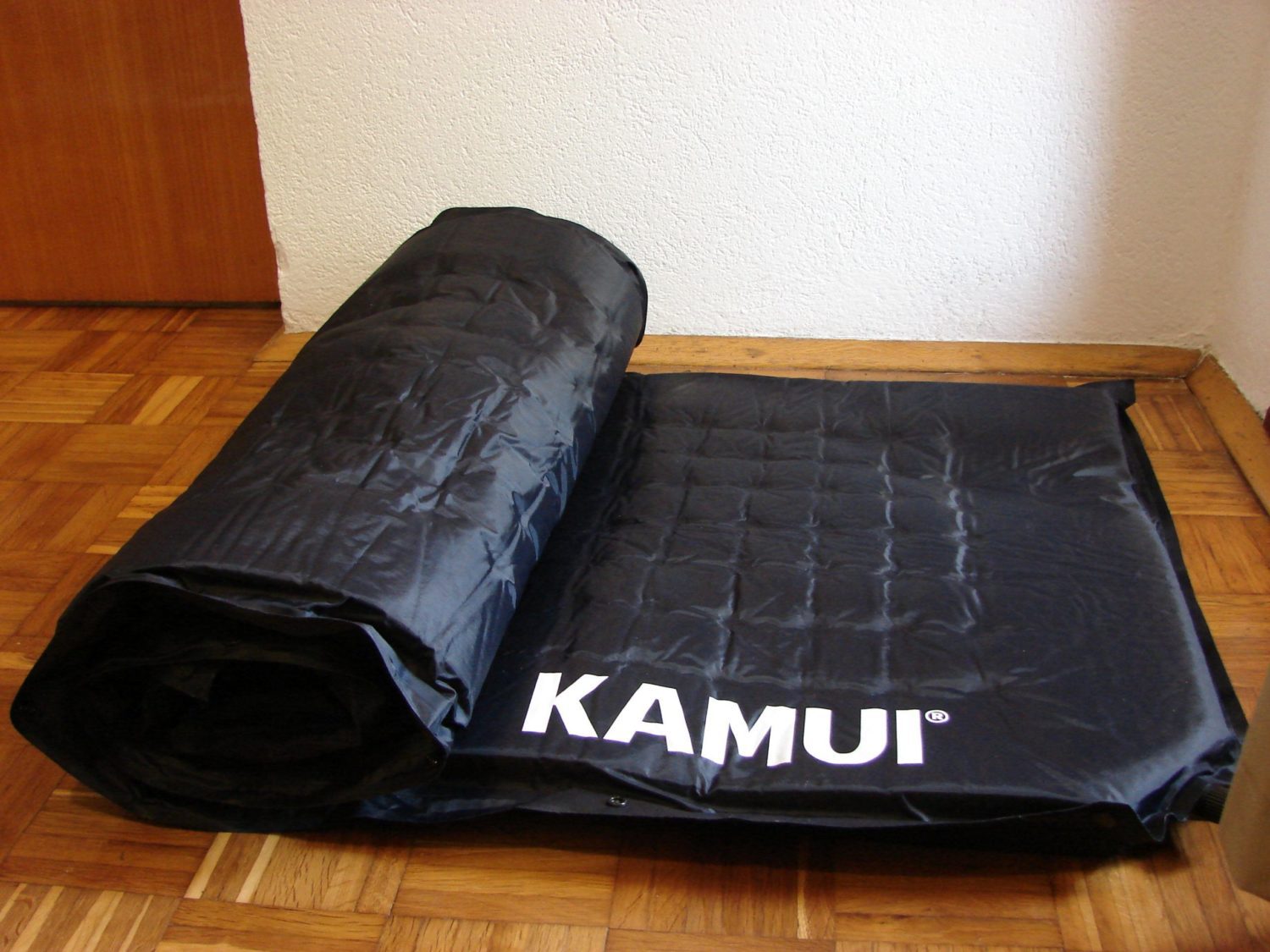
Did you get a new self-inflating sleeping pad, and you’re wondering how to store it properly? We are here to help you learn how to store self inflating sleeping pad correctly and without any problems while inflating or deflating the next time you use them.
It all comes down to the type of pad and storage space you have, so here are our short but helpful steps on aproppritely storing your sleeping pad to maximize its length of use and ease of portability. Next up are our steps to how to store self inflating sleeping pads the right way.

Step#1: Prepare Self Inflating Sleeping Pad for Storage
First of all, you need your prepared pad for your storage process, and this is done by properly maintaining it. In this step, you will have to properly clean and maintain your sleeping pad, and don’t think this is a one-time thing. On the contrary, you need to encourage good handling and proactive use every time you open your air valve and use your sleeping pad.
Thus, this is why step no. 1 is so important. Without a fully and properly functioning sleeping pad, you will have nothing to maintain and store, so make sure to use your sleeping pad in line with our How to use self inflating sleeping pad article.
You can also find tips on opening and closing your pad correctly here, but the important thing is you know how to clean it. So, here come our steps on how to prepare a sleeping pad for storage by cleaning it:
- Fill a tub with soapy water. Make sure you don’t use detergent but mild soap. Get a cloth and put it in the water.
- Take your sleeping pad and unroll it.
- Rinse the cloth in the water, dry it out, and proceed with brushing your pad with the semi-wet cloth.
- Do not put any water into the valve or near it.
- When done with wiping the pad down, set it out to dry.
- Always keep the pad’s valve open when drying and never leave it in direct sunlight.

Tips on sleeping pad maintenance and care
Here are some of the more critical factors to keep in mind when talking about foam pad maintenance:
- Due to the open-cell foam, when using your pad, make sure you don’t blow in too much air, or the pad might produce mildew.
- Never insert water or detergent into the valve.
- Do not machine wash or machine dry your pad.
- Never leave your pad with a closed valve in the sun, and generally, never leave it exposed to UV rays.
- Don’t store your pad compressed.

The last tip is what we are planning on focusing our article on, and in the next steps, make sure to follow through if you want to know how to store self inflating sleeping pad properly.
Step #2: Store Self Inflating Sleeping Pad on the Trail
Once your sleeping pad is maintained correctly and free of mildew and leaks, make sure you know how to store your pad when out in nature. This means properly rolling and unrolling your pad, which you can see on this video we at KAMUI prepared for you:
When on the trail, feel free to roll and unroll your self inflating mat, without thinking about open valves or leaving your pad in cold places. That’s what sleeping pads are designed for: Backpacking or camping with using minimal space.
So, once on the trail, keep your sleeping pad with your other gear, rolled up next to your sleeping bag, when transporting it from point A to point B.
When out on the trail, don’t feel guilty for pushing all the air out of your pad. You’re supposed to transport it this way. But, once you get home, make sure to follow our instructions on how to store self inflating sleeping pad at home.

Step #3: How to Store Self Inflating Sleeping Pad at Home
Next up is the last step in the process of storing your camping pad, and the most important one. When talking about home storage, it’s different from keeping it rolled up in your backpack.
Once home, your pad for camping should be stored appropriately, never with a closed valve, and unrolled. Proper storage is a key factor when talking about future sleeping pad performance. If you want your pad to function when appropriately inflated, make sure to store it properly.
How to store your sleeping pad away?
Here are the steps you need to follow for storing it like the manufacturer intended it to:

- Take your sleeping pad out of the bag and unroll it.
- Open the air valve to let circulation flow.
- Position your valve up, now down, so moisture can circulate.
- Leave the pad in a designated storage space.
- Never leave your pad in storage if it isn’t dry
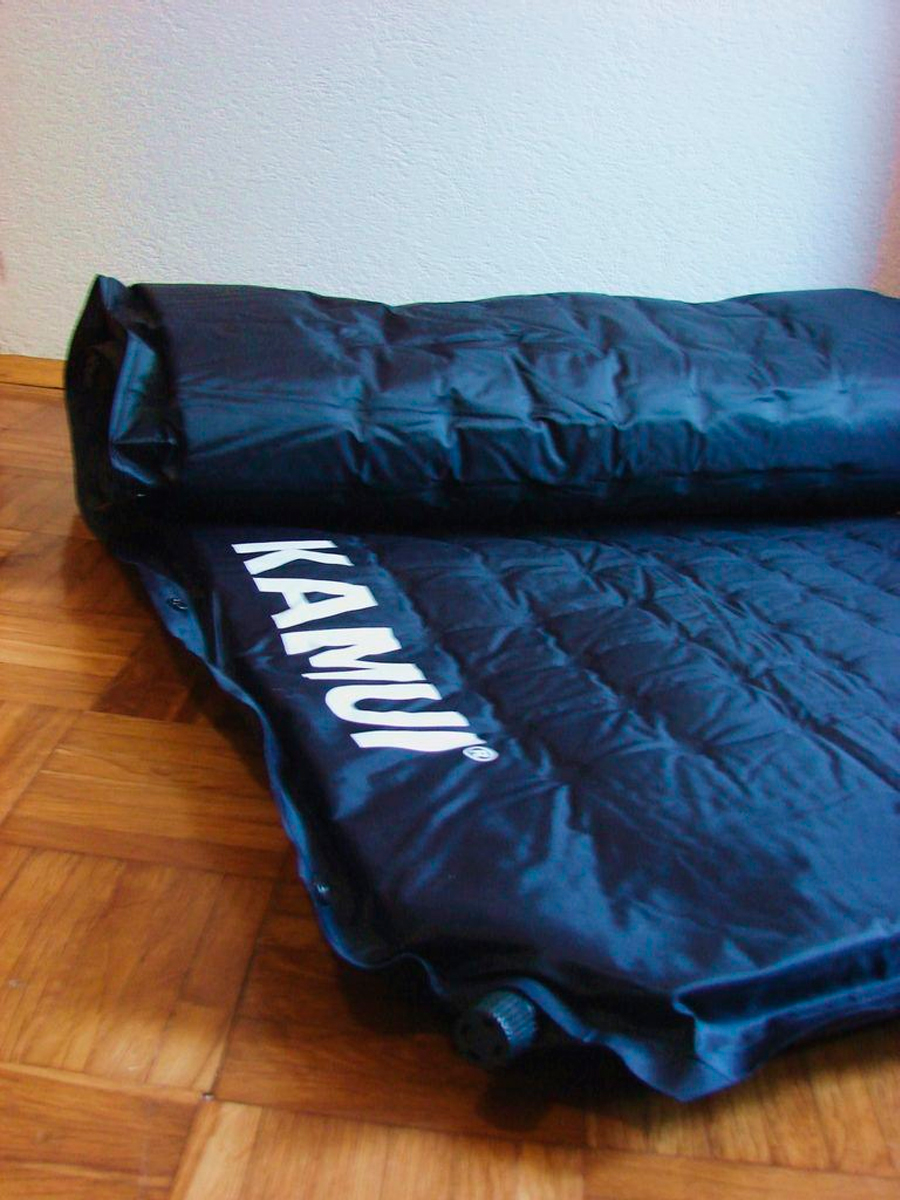
Where should you leave your pad?
Once it’s ready to be stored, make sure you leave your mat in a dry and cool space, maybe something like:
- Back of your closet
- Behind your bed or below it
- Behind a bookshelf
- Inside designated outdoor gear storage, if you have one
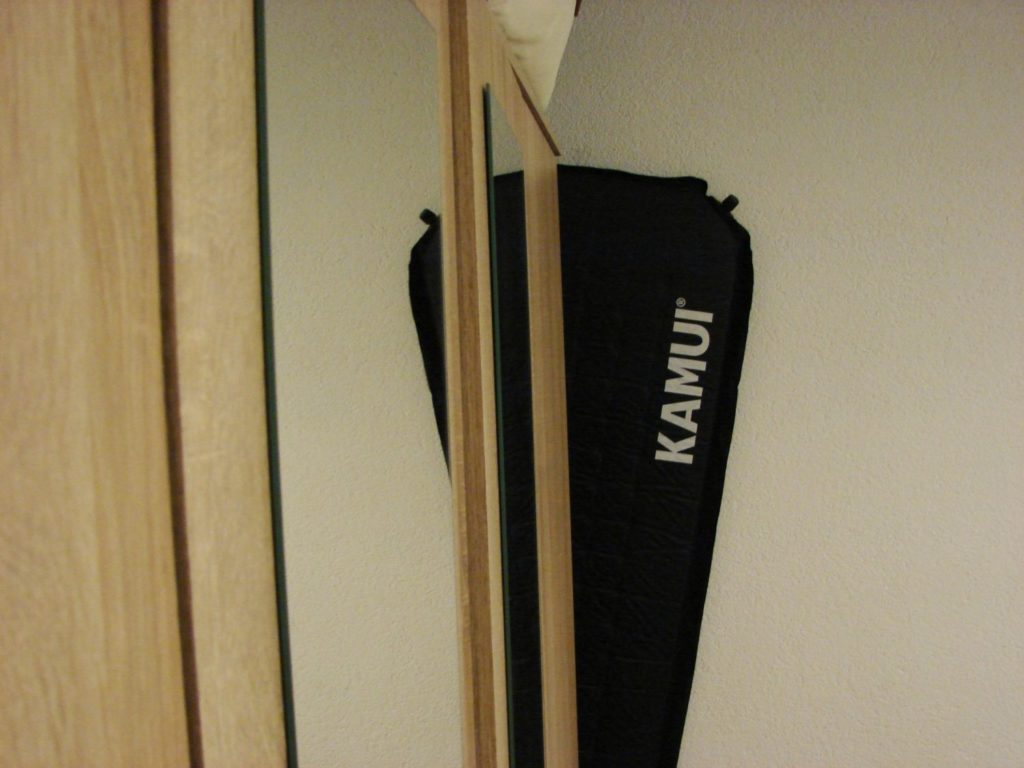
Checklist for sleeping pad storage
So, let’s review how to store your sleeping pad in line with the product info and details to be ready for any camping trips:
- Clean pad
- Dry pad
- Open valve
- Unrolled pad
- Dry environment
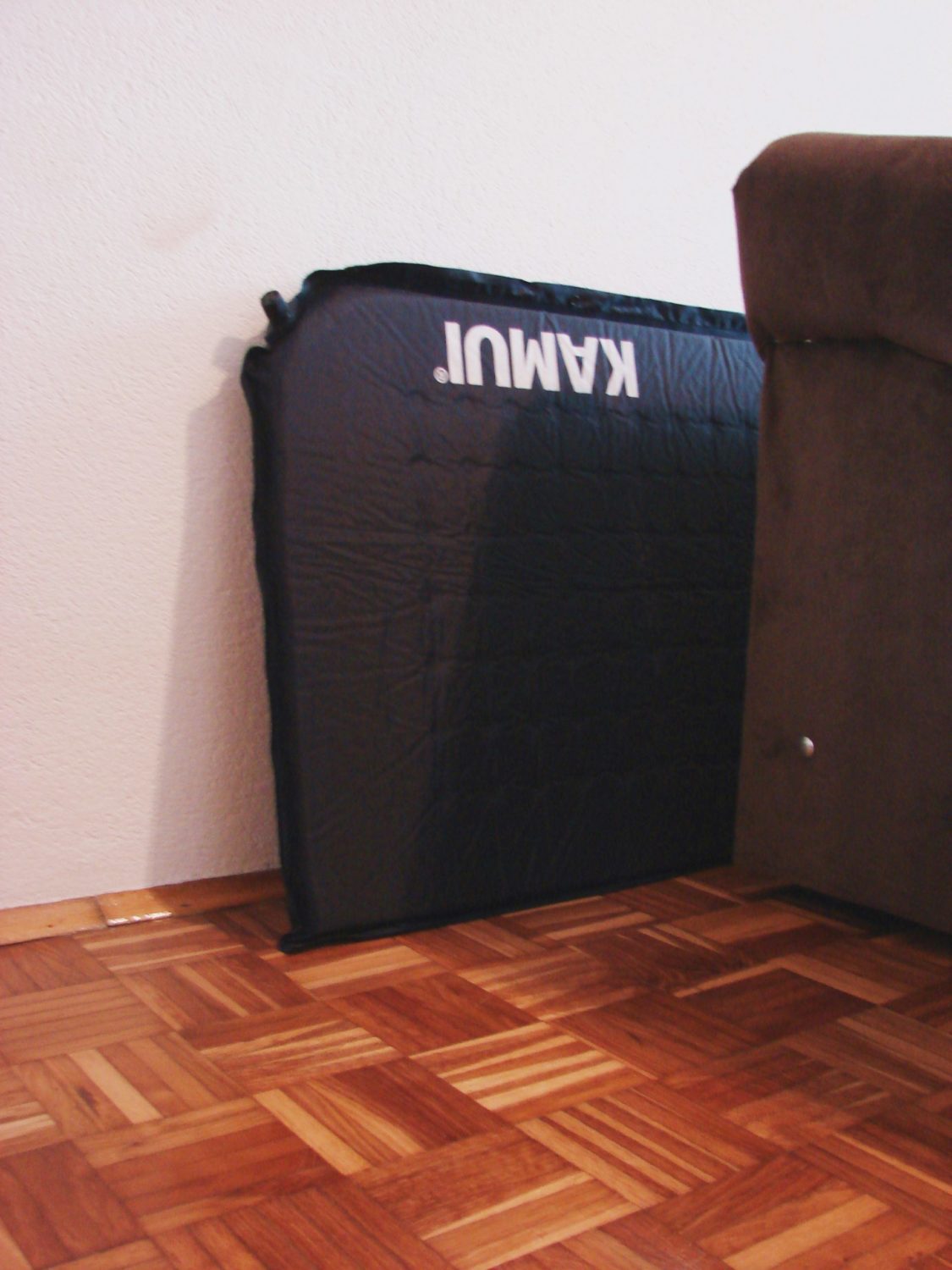
You should not ignore these sleeping pad instructions, on the contrary, the stored size of the pad is only a pro when you use it for traveling or transporting the pad. Never leave your pad rolled up in your home for extended periods, or it might pose a threat to the open foam inside of it.
The KAMUI Self-Inflating Sleeping Pad
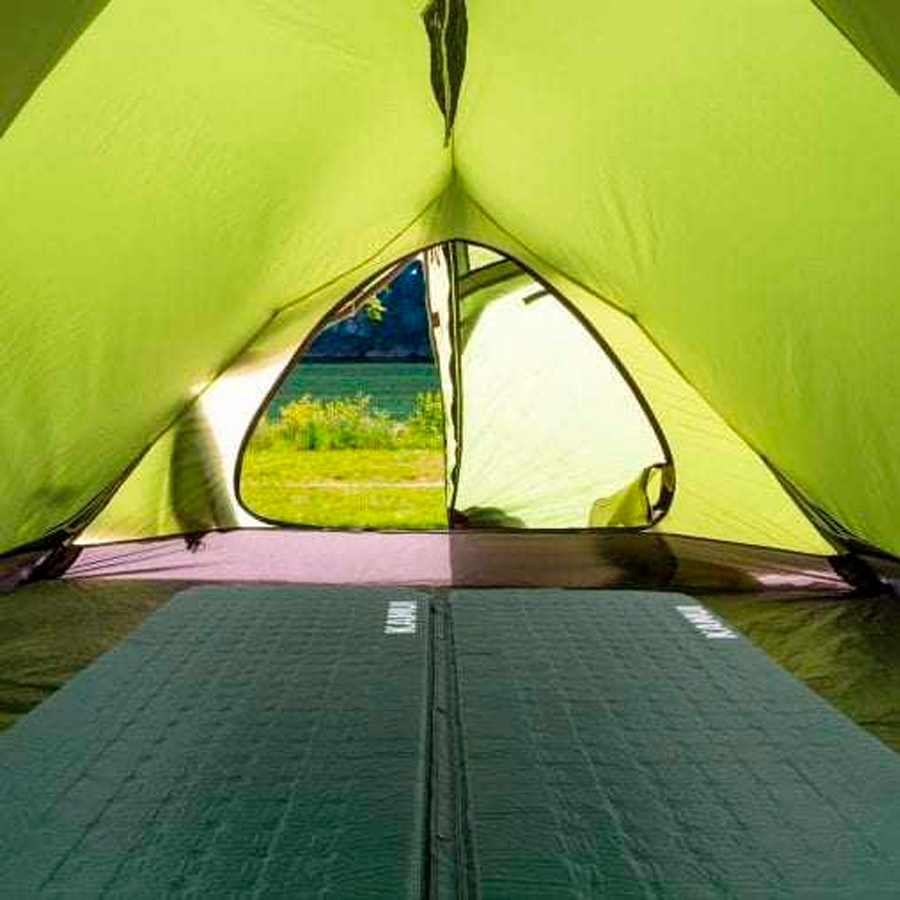
After reviewing all of the essentials when it comes to storing a self-inflating pad in your home when done with camping, we need to tell you what our favorite in the camping mat category is. It’s our KAMUI self-inflating sleeping pad! You might be wondering why? Here are the added benefits of our favorite pad so far, not just in terms of use but also when it comes to storage too:
- 2-inch thickness
- Made of heavy-duty polyester
- R-Value 5.7 for all-season camping
- Stored size is 25 x 7.5 inches
- Stackable
- Connects to other sleeping pads
FAQ
If your gear is heading for some winter hibernation, leave it unrolled, open, and in a dry place, where it won’t be in the way.
Yes, if you compress the foam inside your camping mat for long periods of time, it will lose its memory and malfunction. This means they won’t inflate or will not inflate fully, thus being permanently damaged by storing it compressed all the time.
Cleaning your mattress preserves its life expectancy, aside from ti being an obligatory clean after every season of using it. That’s not just the case with sleeping pads, but with your other gear too.
No, all manufacturers of sleeping pads, do not recommend you do this. This is because tightly sealed mats can lose their ability to inflate when deflated for extended periods of time.
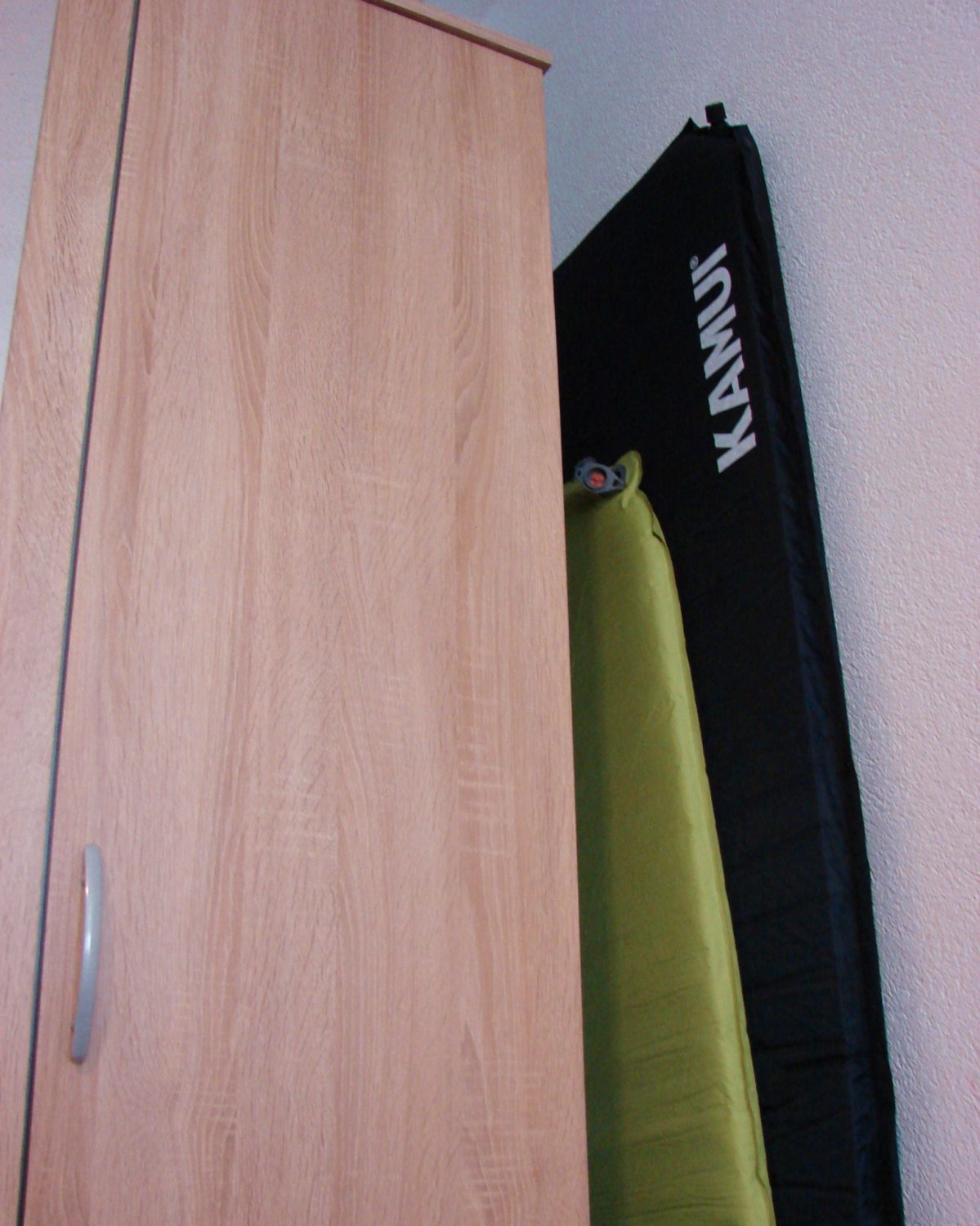
Conclusion
It doesn’t matter what type of sleeping pad you have, open-cell, self-inflating, lightweight, or classic, these rules still apply to you. Lastly, both the lightweight and classic pads on the market still need to be stored in the same way; Open, dry, and unrolled.
Now you have learned how to store your pad both on the trail and at home, but also how to clean and maintain it too!
We hope our short how-to article helped you with how to store self inflating sleeping pad inside of your home without compromising the quality and use of your product.




